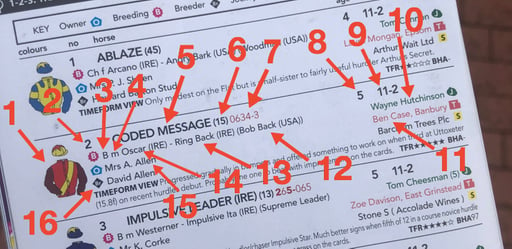When you go to the races, many tend to buy and read the Racing Post for tips and opinions, some have their own fancies through possible infos, whereas others especially in this day and age - research their picks online.
The racecard is the more traditional bit of kit, which allows racegoers and punters to study the form, and find out more about the horses that are racing in front of them.
Whether you are a horse racing newbie or indeed an expert, the racecard can appear quite confusing with a whole host of numbers, letters and facts to get stuck into.
Fear not, as we have used a Form Guide from the Lingfield Card on Monday afternoon as an example, and broken down each component for you to understand:






